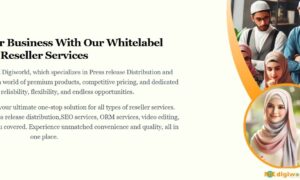For many retirees, managing finances can be challenging. RGroup Property Management suggests that one potential solution to ease financial strain is a reverse mortgage. By understanding the different types of reverse mortgages, retirees can make informed decisions and maximize the benefits of this financial tool.
Understanding Reverse Mortgages
A reverse mortgage allows homeowners aged 62 or older to convert part of their home equity into cash without having to sell the house or make monthly mortgage payments. The loan is repaid when in the borrower sells the homes moves out or passes away. This can provide much-needed financial flexibility for the retirees.
Different Types of Reverse Mortgages
There are several types of reverse mortgages, each tailored to different financial needs and circumstances. Understanding these types is crucial for selecting the best option.
- Home Equity Conversion Mortgage (HECM): Insured by the Federal Housing Administration (FHA), HECMs are the most common type of reverse mortgage. They offer flexible payout options, including a lump sum, monthly payments, or a line of credit. HECMs come with consumer protections, such as mandatory counseling to ensure borrowers understand the loan terms.
- Proprietary Reverse Mortgage: These are private loans offered by mortgage companies and banks. They are designed for homeowners with high-value properties and can provide larger loan amounts than HECMs. However, they do not offer the same level of consumer protections as HECMs.
- Single-Purpose Reverse Mortgage: Offered by state and local government agencies or non-profit organizations, these loans are intended for specific purposes, such as home repairs or paying property taxes. They typically have lower costs and interest rates but are limited in scope.
Benefits of Reverse Mortgages
Reverse mortgages can offer numerous benefits to retirees:
- Additional Income: They provide a source of funds to cover living expenses, healthcare costs, or other financial needs.
- No Monthly Payments: Borrowers are not required to make monthly mortgage payments, freeing up cash flow.
- Home Retention: Retirees can stay in their homes while accessing their equity, as long as they meet the loan obligations.
Steps to Take Advantage of a Reverse Mortgage
To benefit from a reverse mortgage, retirees should follow these steps:
- Evaluate Your Financial Needs: Determine your financial goals and needs. Consider how much money you need and what you intend to use it for.
- Understand the Types of Reverse Mortgages: Familiarize yourself with the different types of reverse mortgages and determine which one suits your needs best.
- Consult a Financial Advisor: A financial advisor can help you understand the implications of a reverse mortgage and how it fits into your overall financial plan.
- Attend Counseling: For HECMs, HUD-approved counseling is mandatory. This ensures you understand the loan terms, costs, and responsibilities.
- Compare Lenders: Shop around or compare offers from multiple lenders to the find the best terms and rates.
- Read the Fine Print: Carefully review all loan documents and understand the fees, interest rates, and repayment terms.
Potential Risks and Considerations
While reverse mortgages offer benefits, there are also potential risks:
- Costs: Reverse mortgages can have high upfront costs, including origination fees, closing costs, and mortgage insurance premiums.
- Reduced Inheritance: The loan balance increases over time, which can reduce the amount of inheritance left to heirs.
- Loan Obligations: Borrowers must continue to pay property taxes, homeowners insurance, and maintain the home. Failure to the meet these obligations can result in the foreclosure.
Conclusion
Reverse mortgages can provide significant financial benefits for retirees by allowing them to access home equity without selling their property. By understanding the different types of reverse mortgages, evaluating financial needs, consulting with advisors, and carefully selecting the right loan, retirees can effectively leverage this financial tool to enhance their retirement years. However, it is essential to weigh the benefits against the potential risks and ensure that a reverse mortgage aligns with long-term financial goals.



































